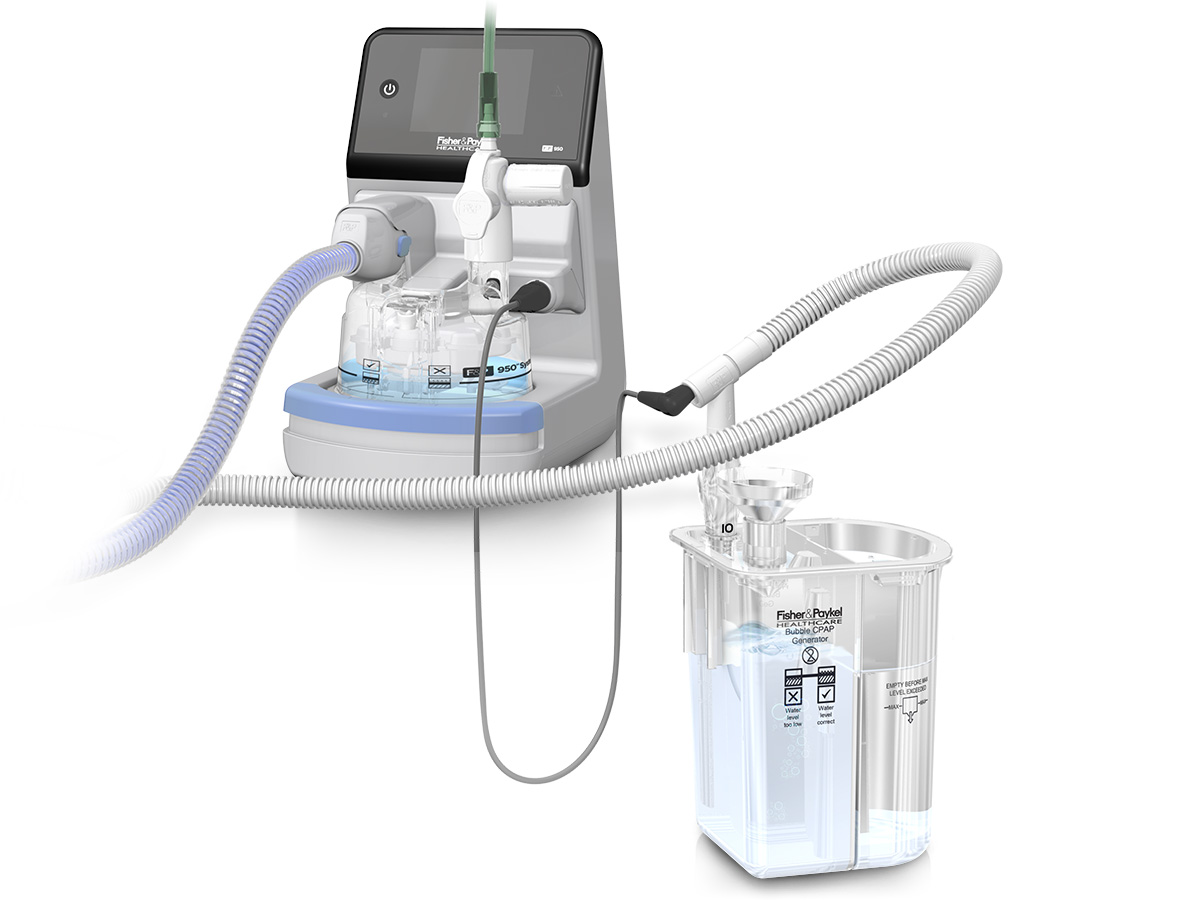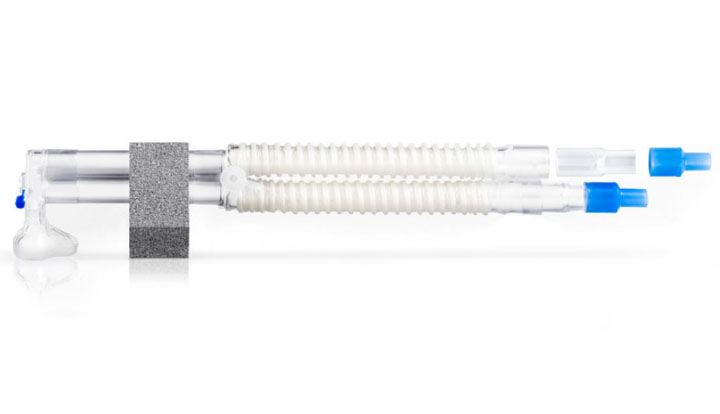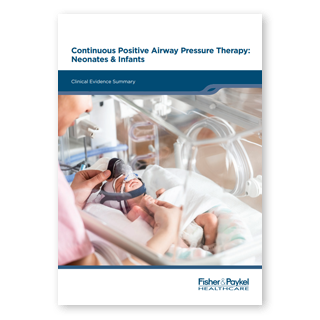Designed to provide consistent pressure to infants up to 10 kg. This system includes circuits, a pressure relief manifold and a Bubble CPAP generator.
FlexiTrunk™ nasal CPAP interface
An integrated solution that includes all the components for delivering CPAP: nasal masks, nasal prongs, bonnets, and headgear. Provides a complete system when combined with a Bubble CPAP generator.
How does CPAP work?
CPAP therapy delivers a mixture of heated, humidified air and oxygen and generates a continuous distending pressure throughout the respiratory cycle by means of a sealed interface.1,2
CPAP can be used in both the acute and recovery phases of respiratory distress syndrome (RDS) and is well established to improve the work of breathing.5,6
Selecting an appropriately-sized interface is important for achieving an adequate seal. Short bi-nasal prongs or a nasal mask are the most common types of interfaces for CPAP delivery.3
Bubble CPAP is a type of CPAP therapy commonly used for younger patients.4 During bubble CPAP, an underwater seal is created by submerging the expiratory tube in water to varying degrees. Gas exiting the expiratory tube produces bubbles, the bursting of which generates pressure oscillations, which may improve gas exchange and carbon dioxide (CO2) elimination compared with other modes of CPAP delivery.1,4
• Bubble CPAP generates pressure oscillations
• Promotes airway hydration
Bubble CPAP generates pressure oscillations
Pressure oscillations generated during bubble CPAP therapy produce vibrations that are similar to those produced by high-frequency ventilation, and which may improve gas exchange and CO2 elimination.4
Studies have demonstrated these pressure oscillations may be transmitted down the airways and into the lungs.4,17
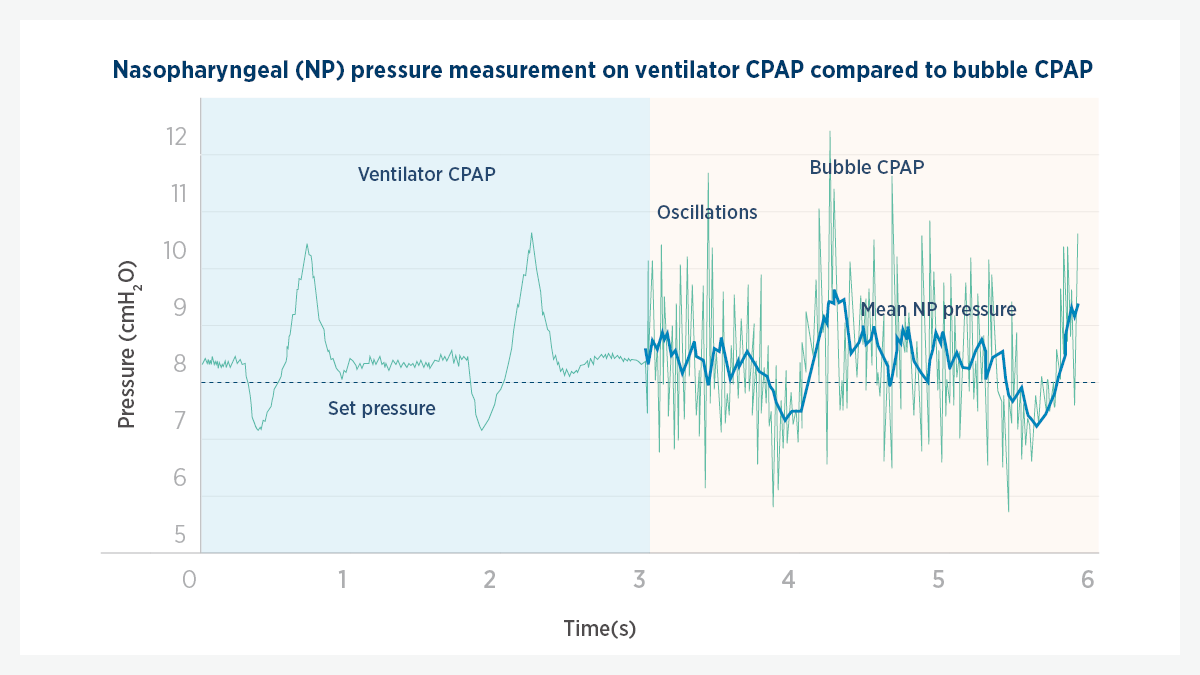
Fig 1. Graphical representation of bubble CPAP generated pressure oscillations. The pressure vs. time plot shows how pressure oscillations vary over time (green line) alongside the resulting mean airway/nasopharyngeal (NP) pressure (blue line).
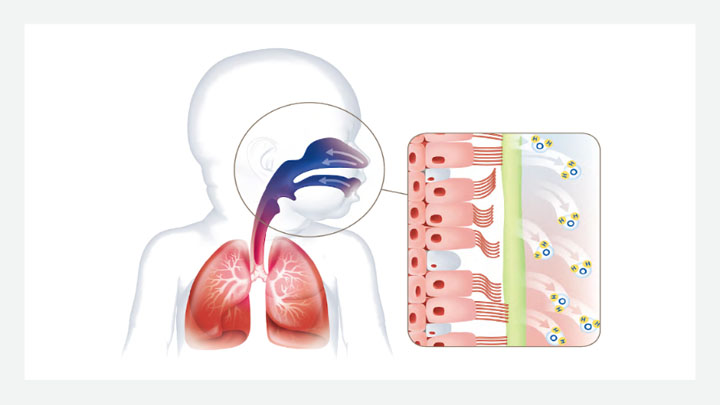
Promotes airway hydration
During CPAP therapy, continuous distending pressure is generated throughout the respiratory cycle, and a heated and humidified mixture of air and oxygen is delivered.
Heated and humidified gas is an important aspect of delivering CPAP therapy, assisting with the natural defense mechanisms, maintaining airway mucosa and promoting conservation of energy for growth and development.23,24
F&P and FlexiTrunk are trademarks of Fisher & Paykel Healthcare Limited. For patent information, see www.fphcare.com/ip
